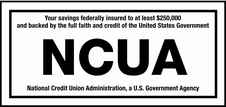
Many people love making travel plans. They think of an exotic destination or a dream trip and then start planning, using the web to research airfares, hotels, restaurants, and attractions. After doing some online fantasy shopping, they may even become obsessed with finding the best deals to make that trip a reality. However, without travel budgeting, they may find that they have overspent on their vacation, or had to cut so many corners that the trip wasn’t everything they hoped it would be. Although travel planning may be exciting, travel budgeting may be the last thing you want to do. But if you take the time to calculate your spending in advance, you can have a better travel experience without worrying about emptying your bank account.
The truth is that Americans are poor planners when it comes to travel budgeting. According to the U.S. Travel Association, U.S. domestic travel was up 1.9% in 2018, resulting in about $1.1 trillion in travel spending. However, 55% of households don’t even plan for vacation spending in their annual budget, and 75% of Americans go into debt to pay for vacations.
There is no reason to go into debt when planning your next family trip if you understand how to approach travel budgeting intelligently and realistically.
How to Tackle Travel Budgeting
Naturally, how much you spend on a trip depends on a number of variables, such as your destination, how you prefer to travel, and the duration of your trip. However, the expense categories for any trip tend to be the same, so start your travel budget by making a list of expense categories:
- Transportation. Getting to and from your destination tends to be the biggest travel budget expense, especially if you are traveling by air. You can estimate airfare by checking out any number of travel websites, such as Expedia, Kayak, Hipmunk, Priceline, or Booking.com. You can also check airfares directly on airlines’ websites. When estimating airfare costs, be sure not to use the lowest available fare. Airfares fluctuate and low fares tend to disappear quickly. Lower fares will also reflect less popular routes, such as non-direct flights with numerous stopovers. If you aren’t flying, you can easily determine bus and train fares. If you choose to drive, consider the cost of gas, parking, tolls, etc.
- Lodging. After transportation, hotel accommodations tend to be the second most expensive item. Hotel costs also vary widely based on the type of accommodation you prefer, your destination, and other factors. Paying for a hotel room in advance can save you money. Also be sure to join hotel loyalty programs and use your travel rewards credit card to acquire points to help pay for accommodations. Airbnb has become an increasingly popular source of inexpensive and unique accommodations, but it is not regulated, so be sure to read the reviews.
- Meals. Plan for meal expenses, including meals at airports or while in transit. Depending on how you like to travel, you can budget for expensive restaurants or less expensive meals. If you have access to a kitchen, you can even plan to buy groceries. It’s easiest to estimate your meal costs and create a cost-per-day estimate.
- Getting around. As soon as you get to your destination, determine what it costs to get around. If you plan to rent a car, you can estimate costs in advance at most travel sites. If you are in a big city, estimate costs for mass transit fares and cabs. You may also want to consider transportation to and from the airport because that tends to be a bigger expense.
- Activities. Allocate part of your travel budget for sightseeing and activities, such as museums, plays, nightclubs, etc. You may not have an exact plan of what you plan to see, but estimate how much you plan to spend each day. Also plan for spending on souvenirs and shopping.
- Emergencies. Travel budgeting should include contingency funds in case of an emergency. You may not need them, but having a little extra cash is always a good idea. At the very least, be sure you have enough money available on your credit card to handle an emergency.
- Travel insurance. Travel insurance is always a good idea, and it’s typically inexpensive. Travel insurance can be invaluable if you become ill and your medical insurance won’t cover the bills, if you lose your luggage, or for any number of things. It can also help you recover non-refundable fares and prepaid expenses if there is an unplanned delay or problem.
- Housesitting or pet sitting. Need someone to keep an eye on your house, water the flowers, or let the dog out? Make sure you plan accordingly and allocate part of your budget for taking care of your animals and house when you’re away.
Saving for Your Trip
Now that you have a list of likely expenses, you can start planning for your trip. Choose your destination and then calculate the costs for each category. Be conservative in your estimates. Remember that there will be added expenses such as taxes, service fees, occupancy tax, and other expenses you may not have considered. You can’t calculate your trip to the penny (and probably don’t want to), so use your best estimates for costs and round up. If you are uncertain how long you want to be away, you can use your budget to estimate a daily trip cost, which can help you estimate travel expenses and set a goal for your travel fund.
As soon as you have finished travel budgeting you can start saving for your trip. Start with a savings account. You want to have a place for your travel fund where you have access to the cash but won’t inadvertently use it for daily expenses.
You will also want to establish weekly or monthly savings goals toward your trip. You may want to allocate part of each paycheck for your vacation fund, or work it into your monthly budget, but be sure to transfer money into your savings account on a planned schedule.
You can also use other tools to help you build your trip fund. Most banks and credit unions offer automatic funds transfers from checking to savings, which is a good way to schedule regular contributions to the travel fund. There also are programs like iQ’s Easy Saver plan, which rounds up every debit card purchase and deposits the difference into your savings account.
With an accurate idea of how much you need for your trip and how much you can realistically save, you will be in a better position to take advantage of travel bargains. For example, as soon as your travel plans are firm, you can get discounts by prepaying expenses such as airfares, hotels, and car rentals. It can also spread your vacation expenses over a longer period of time, which makes it easier to pay them off before you travel.
If you are smart about your travel budgeting and diligent about saving, then you don’t have to go into debt for your next trip. You will be able to accurately estimate how much the trip will cost and save the cash you will need for a worry-free vacation.



Comments